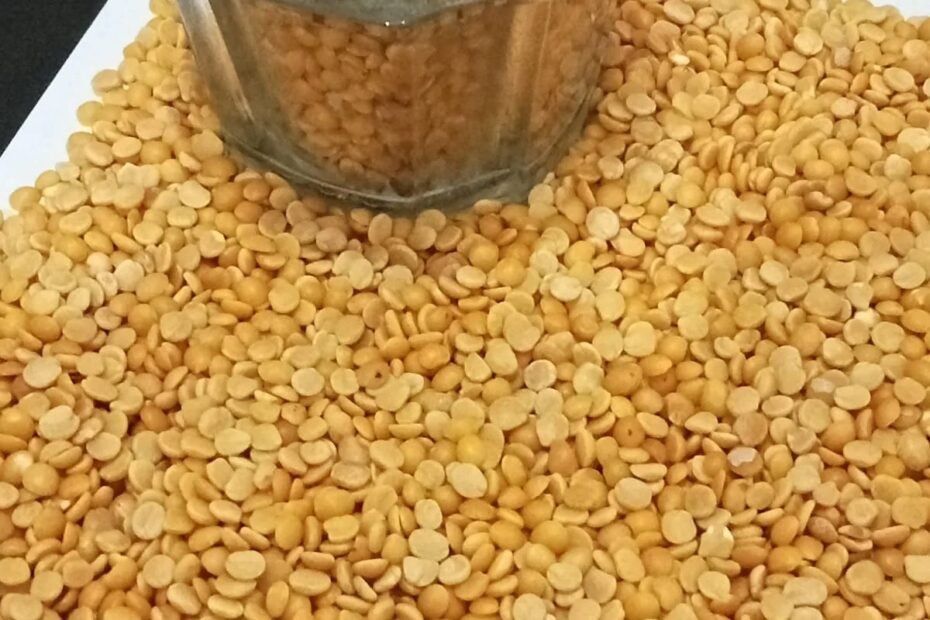Growing lettuce and tomatoes are satisfying but challenging in many climates at many times of the year. Wouldn’t it be great to grow the food we eat every day?
Pigeon peas are also known as Toor Daal. Lentils, and pulses in general are the staple food of around one third of the globe’s human population. This article shares with you, my progress in growing pigeon peas and harvesting the crop.
Pigeon Peas are a fast growing bush, around 3m tall. Like all legumes they host bacteria in their roots that convert atmospheric nitrogen into usable nitrates that nourishes other plants and that we can digest to build protein. That’s one of the reasons that peas and beans (pulses) are so popular as a source of protein.
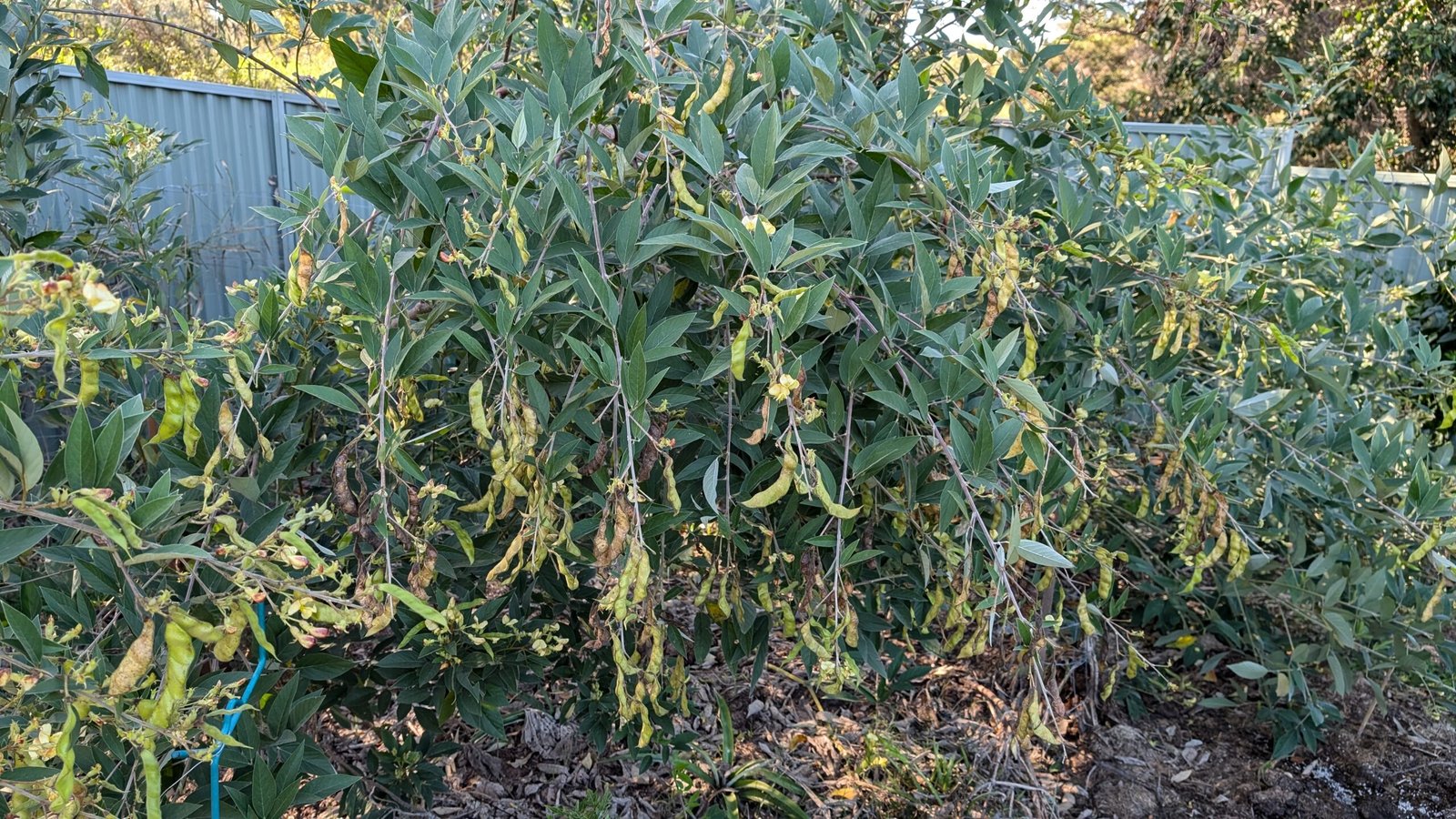
The plants flower continuously in the warmer weather, starting in May or June in Brisbane, and the pods dry out and are ready to pick in about two months. You know they are ready when the lentils rattle in the dry pods. Just shake a branch and you will hear the rattling as soon as the peas are ready to pick.
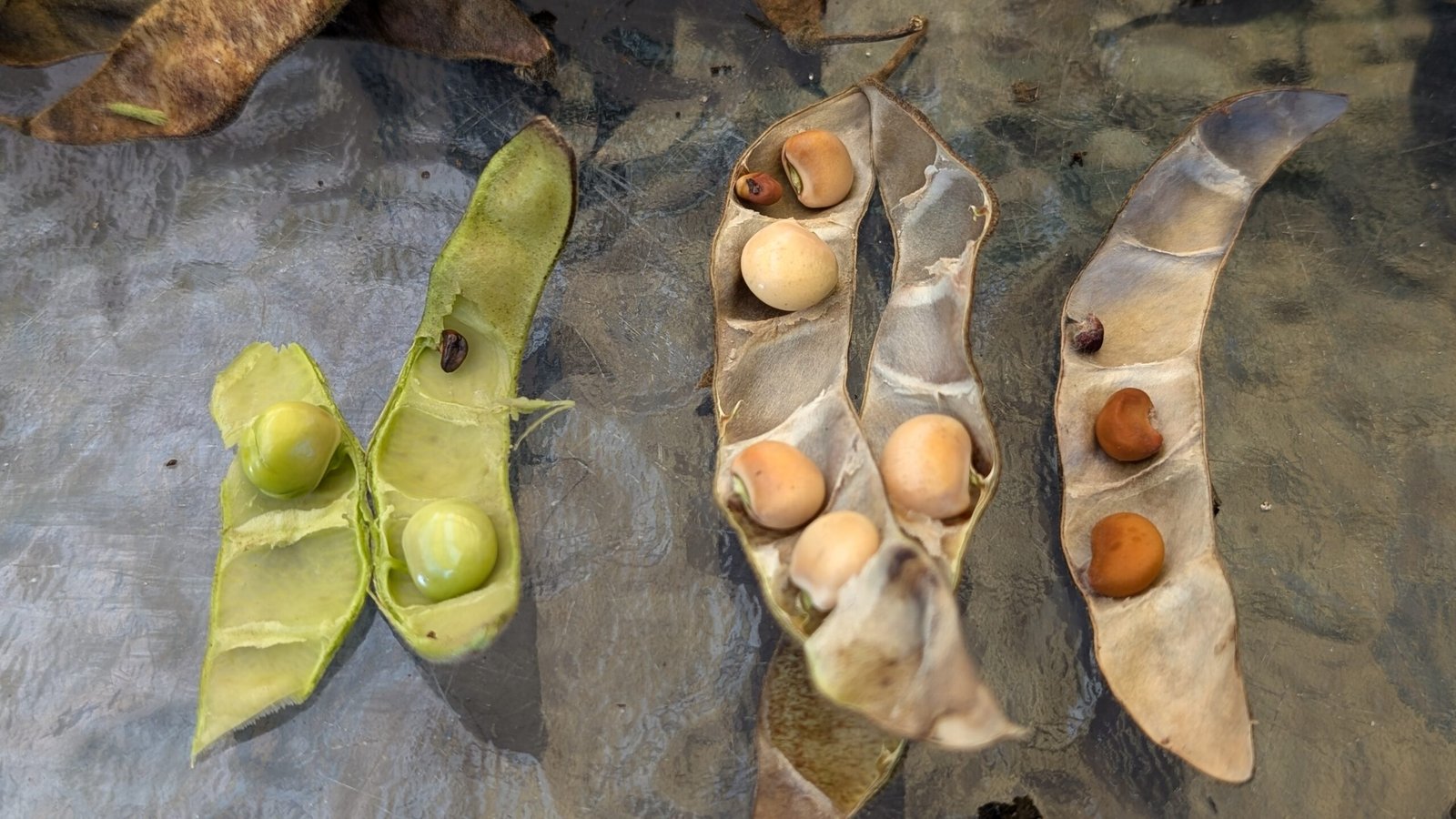
The young peas (green or white) can be eaten fresh, or put straight into a meal, the dried lentils need to be soaked and boiled. Ideally, they should be skinned after soaking, but I find that hard work and so often tolerate the leathery skin in the daal, running it through the food processor before serving. The processing of the pods to achieve the split yellow peas known as Toor Daal is the focus of this article.
Pigeon Peas contribute massively to a food forest, providing shade for young plants, an easily picked and stored source of food, and can be “chopped and dropped” to provide a layer of mulch in the hot weather after harvest, that also provides nutritious nitrogen to the soil. The plants last three or more years, but the stems become fragile as the plants age and I tend to allow young plants to take over and remove the older woody plants. You will probably find pigeon peas in your local community garden or permaculture site, as they produce such great results with almost no effort whatsoever.
Processing the peas
Your pigeon pea plants will start drooping from the weight of the flowers early in the season and will continue to droop lower as the first flowers become peas and those pods dry. When the plants start rattling in the breeze, you know that the pods and the lentils inside them are drying out. You can allow the pods to dry out for weeks, but keep an eye on them: if you wait too long they will burst open and spill their seed onto the ground wasting the good food you were hoping to eat.
I pick by hand, just pulling the high branches over to me and pulling the pods against the direction of growth. Puling the branches too hard can break long branches and pulling the pods against the direction of growth can tear the bark off the branch, especially if the pod is only just ripe.
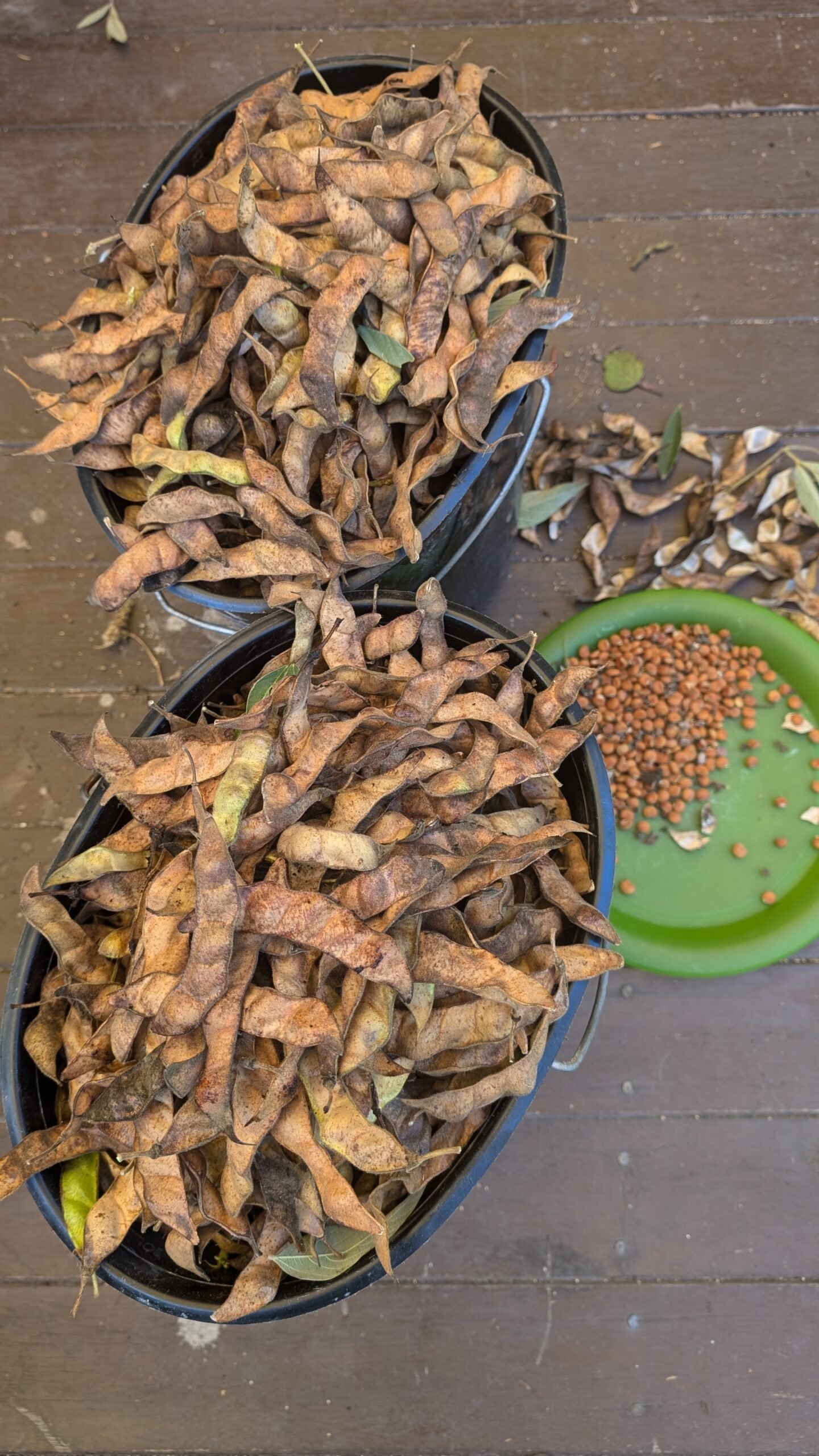
I throw all the pods into a 10 litre bucket as I am picking and then spread them out on a canvas to dry, ideally in the full sun. The sun dries the pods completely causing them to crack. Once the pods are thoroughly dry I walk on them to make sure they are all cracked open.
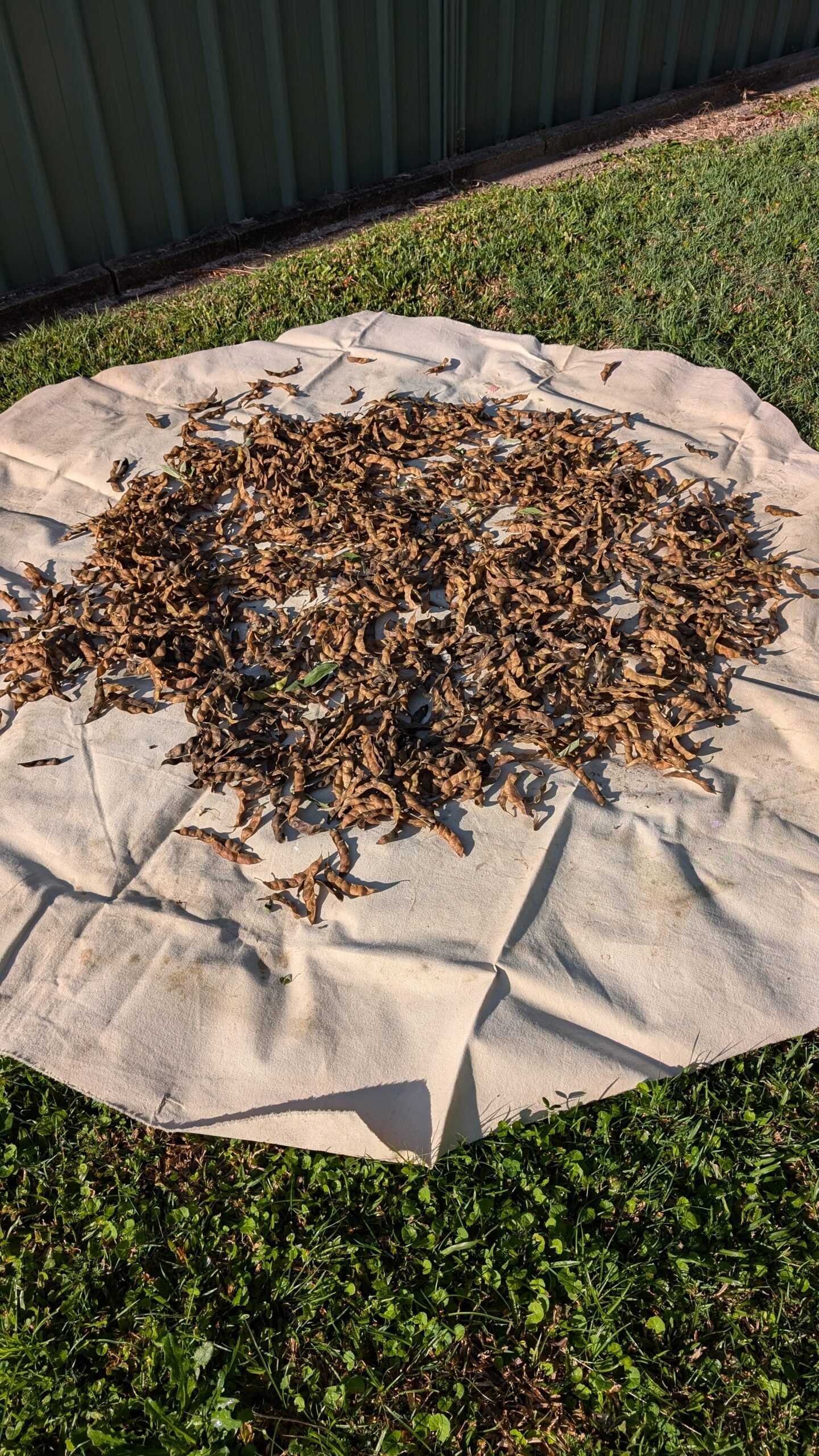
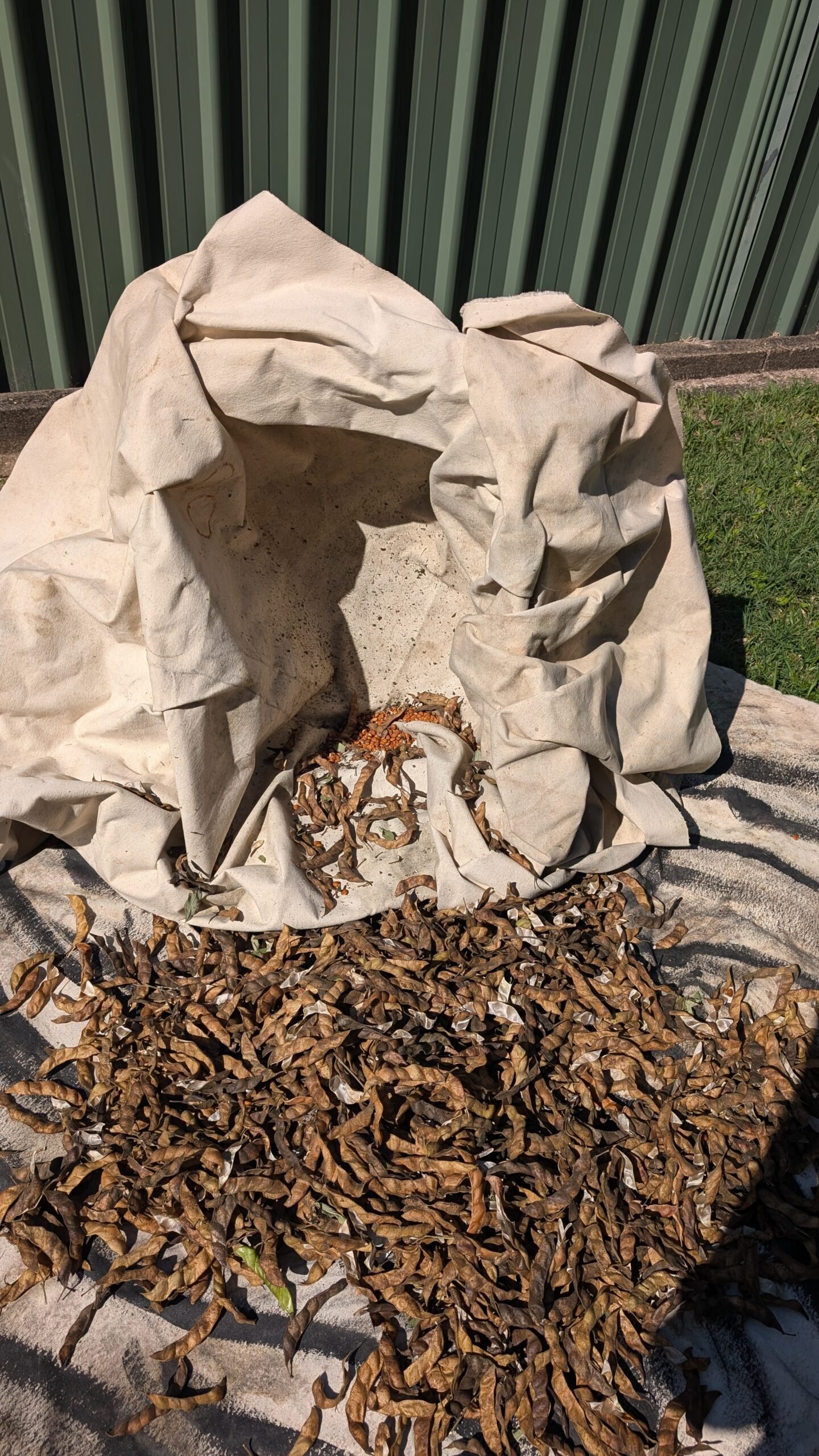

I then put the pods and the canvas into a large container and shake it so that the lentils fall to the bottom and the outer shells of the empty pods rise to the top. I can then shake out the empty pod skins onto another canvas and leave the lentils behind.
The lentils can be stored for years in a dry space and used as seed for future crops. I have found that even five year old lentils still grow, but I have not measured the success rate as I just throw out handfuls of lentils and then thin out the plants as they grow.
To eat the lentils, soak them for 4-6 hours to soften the skin and then rub them to remove the skin. I am yet to find a perfect way to do this in bulk so that I can dry and store the split yellow peas that you buy if you purchase toor daal ready to cook with, but I am working on it. Stay tuned in future posts.
That’s it. Pigeon peas are really one of the easiest staple foods to grow and, except for the skinning, to process.
Like most daal and other pulse based dishes, the trick to flavour is in the spices and the method of cooking. I use turmeric, ginger, coriander and chilli because I grow so much of it, but onion, garlic and cumin are a staple part of my daal recipe that I have not yet worked out how to grow in the sub-tropics.
As always I welcome all suggestions and comments and look forward to hearing from you.
Pondering staples
The staple food of most Australian diets is wheat. Man cannot live by bread alone, but a bit of cheese and a slice of cold meat, and it just about fulfils the basic requirements. Some brewers argue that bread is a waste of good grain and yeast. Beer and cider have been staple sources of safe hydration in times when clean drinking water was not available. A friend of mine used to go out every morning to get his gran a billy of beer so that she could refresh herself during the day. They had no running water in inner city Melbourne back in the day.
Brewing beer and baking bread became fashionable for a while during Covid, so did growing tomatoes and lettuce, especially when the price of lettuce soared to $12 due to climate chaos. None of us, though, thought that we should grow our own wheat, barley or rye.
I live in sub-tropical Brisbane. As I write the winter temperature is soaring to 36 degrees Celsius (96 degrees Farenheit). That is hotter than the top temperature in Europe right now, where it is Summer! We cannot grow rye and barley if we try. Brisbane is on the coast and it is way to humid for wheat, or for most European vegetables for that matter, but that is the topic of a different article.
So what are the basic foodstuffs for this climate?
Corn is good, though we tend to grow sweet corn for eating fresh rather than maize for corn meal, and most of us don’t know how to cook with maize. Rice is good, but I was not brought up on how to grow, or to cook, rice. I have learned the basic art of steamed white rice as an adult, but know infinitely more about cooking wheat products such as pasta, cakes, bread, pastries, dumplings, cracked wheat, and so on.
Lentils are a fabulous food for hotter climates and depleted soils, and pigeon peas are fabulously easy to grow. Rice is another subtropical grain, that complements lentils well, but I have yet to experiment with backyard rice growing. As I said about onion, garlic and cumin. Let me know any tips or tricks you have to growing these staples, or sub-tropical alternatives.
